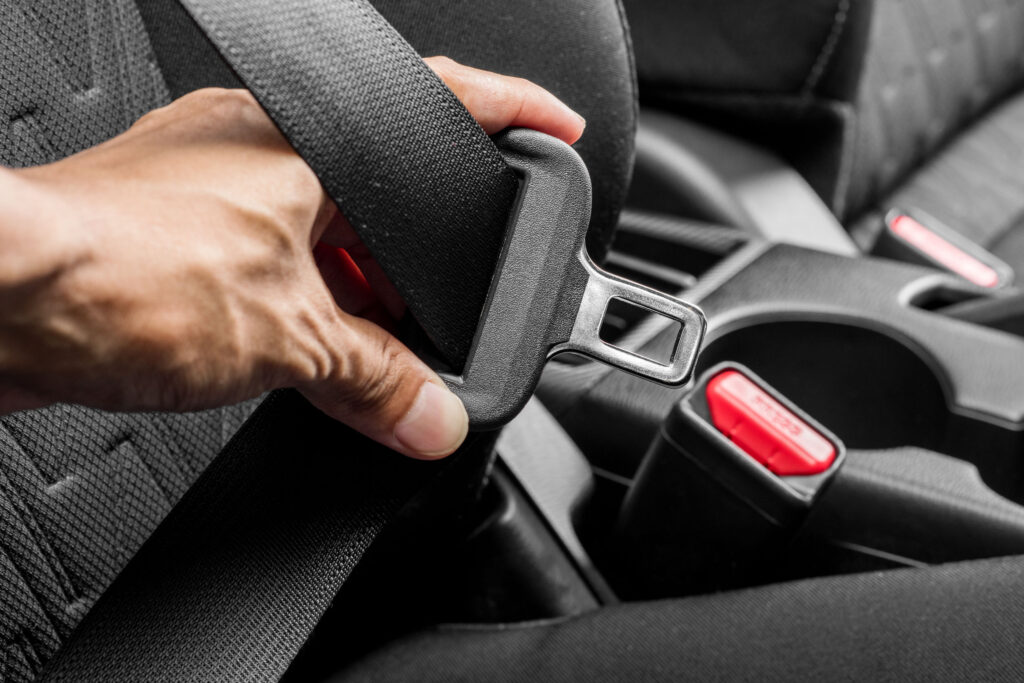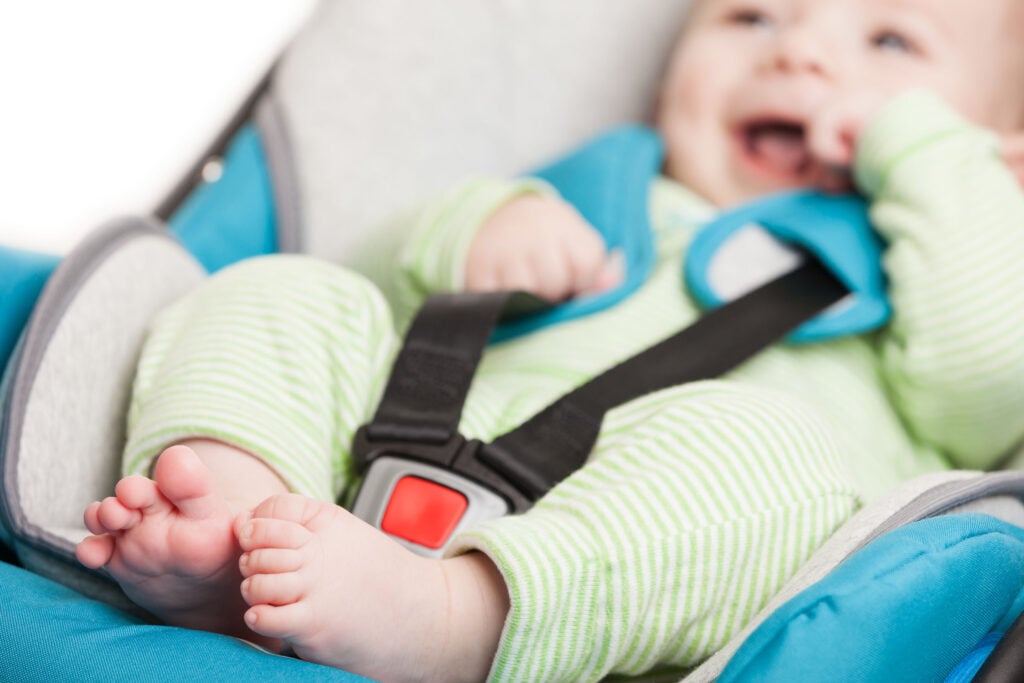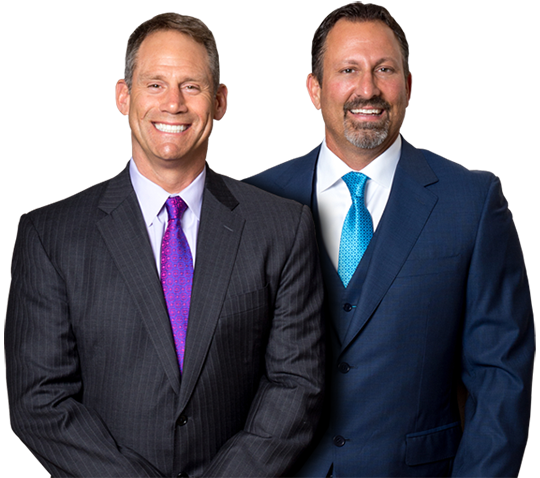
Zooming down a freeway or cruising the backroads of Nevada can feel exhilarating. However, when that drive comes to an abrupt stop, seat belts are designed to lock and help keep passengers secured. Without a seat belt, a passenger may be thrown forward or out through a windshield. Either of these actions can lead to extensive injuries, or even death. Even knowing this, not everyone chooses to wear a seat belt.
But, is it against the law to not click your seat belt in place as a driver or passenger? Believe it or not, seat belt laws do vary between states. Understanding, however, the following Nevada seat belt laws may help protect you from being found liable for injuries caused by another’s recklessness in Las Vegas. It may also help your car accident lawyer at Lerner and Rowe Injury Attorneys build a strong case on your behalf.
Above all, seat belt and car seat laws aim to keep you and your loved ones safe. Should you suffer an injury on a Nevada road because of the negligent or reckless actions of another person, call (702) 877-1500 for a free consultation. You may be entitled to compensation.
Nevada Seat Belt Laws
Each state has its own requirements when it comes to seat belt use. It’s important to know the laws in your home state and any state you may drive through.
Vehicles Required to Have Seat Belts
First, Nevada has rules about which vehicles must have safety belts. For instance, any vehicle made in 1968 or after must have lap belts in use. Any vehicle made during or after 1970 must have shoulder belts in the front seats, and lap belts in the back.
Front and Back Seat Belt Laws in Nevada
Nevada seat belt laws (NRS 484D.495 and 484B.157) require that anyone sitting in one of the front seats must wear a safety belt at all times. Failure to do so could result in a $25 fine. Likewise, the Nevada seat belt law for the back seat of a vehicle indicates that these passengers must also have a seat belt on. Younger passengers (including those under the age of six and under the weight of 60 pounds) must be in an appropriate car seat.
These laws apply to more than just passenger vehicles. Drivers holding a Commercial Driver’s License (CDL) and those riding in a recreational vehicle (RV) must also have seat belts on.
Conversely, motorcycles do not have seat belts, as it is actually safer if motorcyclists are not strapped to their bikes in the event of a crash. For their protection, however, motorcyclists and those who ride mopeds are required to wear a helmet under Nevada law.
Nevada Does Not Have a Primary Seat Belt Law
Nevada is one of fifteen states that does not have a primary seat belt law. Because of this, drivers cannot be pulled over simply for not wearing a seat belt. First, there must be an initial reason for the traffic stop. Then, anyone in the vehicle failing to wear a seat belt may receive a citation. This non-moving violation will not result in a loss of points on a driver’s license.
Exemptions from Seat Belt Laws in Nevada
While wearing a seat belt almost always keeps a passenger safer than not wearing one, there are a few exceptions to the seat belt rules in Nevada.
- Some medical conditions may call for a doctor’s note exemption. The condition must be severe enough where it is impossible for the belt to be fastened.
Conditions like arthritis, pregnancy, or the position of a pacemaker will probably not count as a valid medical exemption. This is because the proper positioning of a seat belt should not cause as much harm as injuries from an unrestrained accident.
- Another exemption from seat belt laws in Nevada affects delivery drivers. Delivery drivers do not need to wear their seat belt, as long as they:
- Travel fifteen miles/hour or less
- Make stops
However, delivery drivers should still wear their safety belts when not making stops or picking up speed.
- Public transportation is also exempt from Nevada seat belt laws.Thus, passengers on buses and school buses do not need to wear a seat belt.
There aren’t many exemptions to the seat belt laws in Nevada. This helps bring our state closer to the goal of zero fatalities on Nevada roads.
If you or a loved one were injured in an accident, whether you were wearing a seat belt or not, the attorneys at Lerner and Rowe want to help you. Our knowledgeable team offers free consultations to go over the circumstances of your accident, as well as the ins and outs of moving forward with an injury case. With thousands of five star reviews, our personal injury attorneys will work through this arduous task so that you can simply focus on recovery.
Seat Belts Save Lives
Seat belts save thousands of lives each year in the United States. According to the Centers for Disease Control and Prevention (CDC) seat belts saved 13,000 lives in 2009. All told, since 1975, about 255,000 people wearing seat belts survived accidents in which they otherwise would have perished.
Alternatively, of the 33,000 deaths that occured in 2009, over half of the victims were not buckled up. In many cases, lives could have been saved if a seat belt or car seat was buckled properly.
According to the Nevada Department of Public Safety, seat belts save lives in Nevada, too. In 2015, seat belts saved 132 lives. Had everyone worn their seat belt, 18 additional people may have lived.
Due to successful “Click It or Ticket” campaigns, it has become commonplace to buckle up when riding in a vehicle. However, around 318,000 Nevadans still do not wear a seat belt. That’s about 11% of the state’s population. Nationwide, 6 out of 7 people buckle up. Those who don’t put themselves at greater risk of injury and death.
Car Seats Save Lives
According to the National Highway Traffic Safety Administration (NHTSA), 325 children aged five years old or younger were saved by car seats in a single year. In order keep children safe, drivers should:
- Understand the laws in Nevada regarding car seats
- Know the proper kind of car seat a child should be using
- Learn the correct way to buckle a child into his or her car seat
For instance, children under twenty pounds should be placed in a rear-facing car seat. Your little one should stay in this car seat as long as possible. As they grow, they should be moved to a forward facing seat. Make sure to read manufacturer instructions to learn how to buckle your child into their seat. Then, remain vigilant about following the correct procedure every time. Following a routine may help you to always ensure your child has been properly secured.
Car Seat Laws in Nevada

Car seat laws in Nevada indicate that any child aged six or under weighing 60 pounds or less must be in a federally approved car seat. This seat must be installed correctly and attached to the vehicle’s seats safely. Children do not need to be in a car seat on public transportation.
Of course, there may be consequences if the child in your care is not properly secured in their car seat or booster seat. Similar to seat belt laws, the police cannot pull you over for this. However, you may receive a citation if pulled over for another offense, like speeding.
A first-time offense of failing to secure a child in a car seat holds a maximum fine of $500 or 50 hours of community service. This grows with a second or third time, a third offense resulting in 30 day to 180 day driver’s licenses suspension. Finally, extreme cases of failing to secure a child while in a vehicle may lead to child endangerment charges.
Nevada Booster Seat Laws
While a car seat encompasses most of the body, a booster seat “boosts” the child to a safer height for the vehicle’s safety belt. This happens when a child has outgrown their forward-facing car seat. Children around forty pounds may be ready to make this transition. Use the seat’s manufacturer instructions to guide you when you feel your child may be getting too big for their car seat.
A booster seat counts as an appropriate child restraint system when travelling in a passenger vehicle. The same car seat booster laws Nevada apply as they do to car seats; children must be secured properly, and failure to do so may result in citations or charges.
Transitioning from a Booster Seat
After a booster seat, the next transition leads away from any child restraint system. Before leaving the booster seat behind, make sure that your child fits in the vehicle’s seat, with their back comfortably against it and legs bent over the edge. The seat belt should also reach between the shoulder and neck.
Once your child is used to sitting without a restraint system, they may ask to sit in the front seat. Children should ride in the back seat until age twelve. Up until about thirteen years old, airbag deployment can cause serious injury.
Call Lerner and Rowe If You Are Injured in a Wreck
At Lerner and Rowe Injury Attorneys, we understand that even if you do wear a seat belt and take precautions to avoid an accident, you or your loved ones can still end up injured in a wreck.
That is why our experienced Las Vegas personal injury attorneys are just a phone call or message away 24/7. Use our LiveChat feature to talk with an online representative in real time, or fill out an online form.
Worried about paying medical bills and legal fees? Ask us how we may be able to help you get immediate medical care while deferring paying bills to a later date. You also won’t pay a dime to us unless we win you the compensation that you deserve. Reach out today to learn how we can help you during your time of need!



